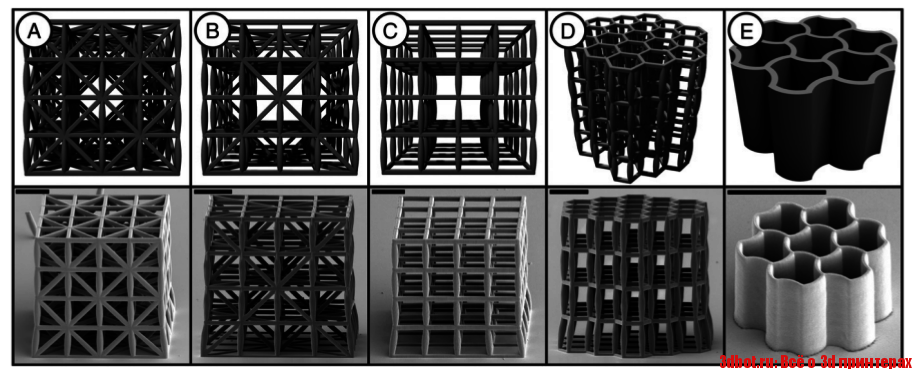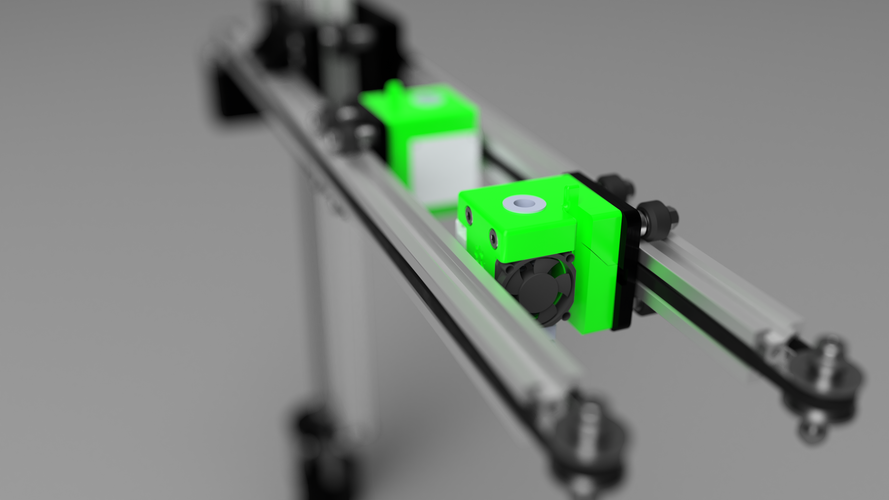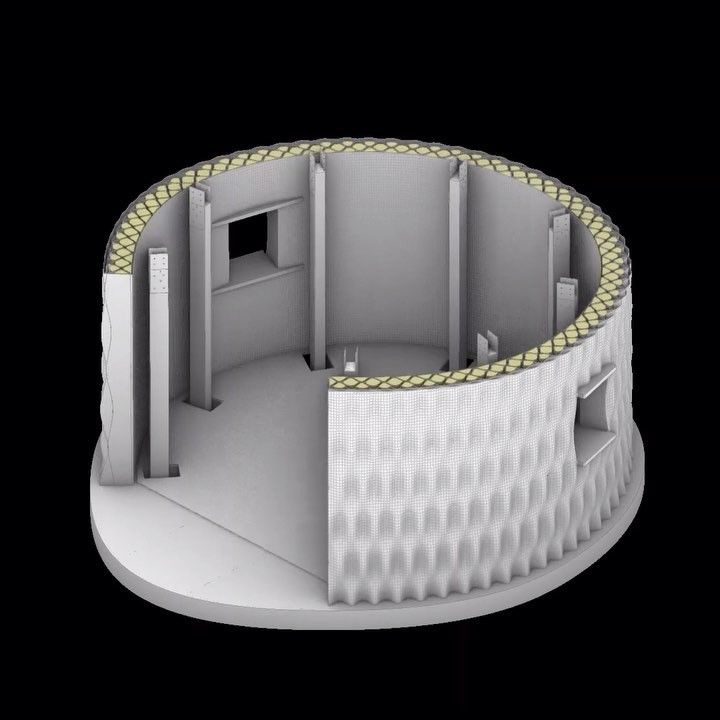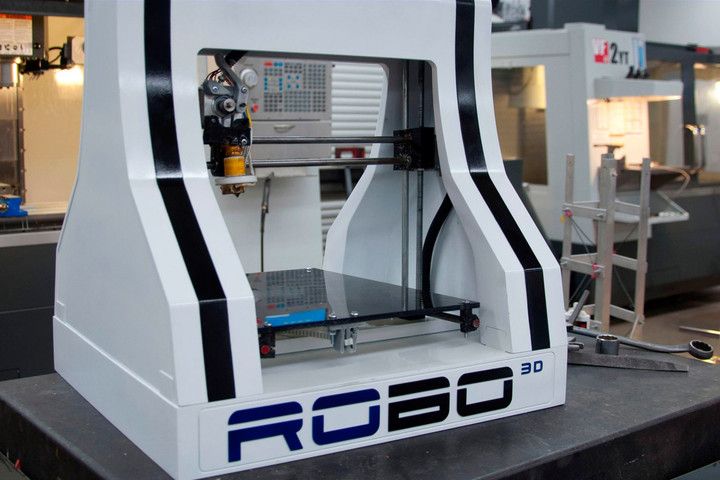Cfrp 3d printing
3D Printing Carbon Fiber and Other Composites
Composite materials, on the other hand, are parts made up of more than one material that, when combined, have properties different from their original materials. Materials like concrete and particleboard can be considered composites, because they are mixtures of a variety of materials. However, when we talk about composites from an engineering standpoint, we usually refer to composites with reinforcing fibers. Carbon fiber, fiberglass, and Kevlar are three of the most common fiber materials used for composites in industry. As we covered in the Physics of 3D Printing, the fibers are like spaghetti - thin, brittle, and easy to snap if bent. These fibers are almost never used by themselves - they are woven into sheets, wrapped into rods, or formed into custom molded shapes with the help of a matrix material to harden the fibers into an optimized shape. When many fibers are bound together to create larger structural elements, forces can distribute and disperse loads along the lengths of all of the fibers.
Fiberglass strands being laid down in a mold and cured with a thermoset resin.
Carbon fiber has one of the highest strength-to-weight ratios out there, making it very valuable for creating lightweight, strong parts. The fibers themselves are made up of carbon atoms whose crystal structure is aligned into strands, making the strands incredibly strong in tension. Traditionally, thermoset resins are used as the bonding agent to set these fibers into a designated shape, cured around a matrix material like foam. So you can create a sandwich panel by “sandwiching” the foam between to sheets of fiber weave, and curing it all with resin. In the context of 3D printing, the fiber can take two different forms:
Chopped Fibers are short-length fibers chopped into segments less than a millimeter in length and mixed into traditional thermoplastics to form what is called a filled plastic. These can be printed with an FDM printing process.
Continuous Fibers require a slightly different 3D printing method, in which continuous fiber strands are coated in a curing agent and laid down into a thermoplastic matrix extruded via a secondary print nozzle. This process is called Continuous Fiber Fabrication (CFF).
This process is called Continuous Fiber Fabrication (CFF).
Two forms of 3D printed carbon fiber: on the top is a chopped fiber 3D printing filament, and below is a continuous strand of carbon fiber.
Either way you add fiber, the addition of the fibers boosts part strength and other material properties, but the amount it helps differs depending on the way that fiber is used, and what fiber it is. Generally speaking, a continuous carbon fiber 3D print is stronger than chopped carbon fiber 3D because the continuity distributes any applied loads.
Chopped Fiber 3D Printing Materials
Chopped fiber filled plastics are the most common type of composite 3D printed plastics. The most widely used chopped composite 3D printing material is chopped carbon fiber - where carbon fiber pieces are mixed with traditional 3D printing plastics like nylon, ABS, or PLA. Adding this “filling” to thermoplastics is a material booster pack. The fibers take on some of the stresses of the part, like how concrete is added to cement to boost its strength.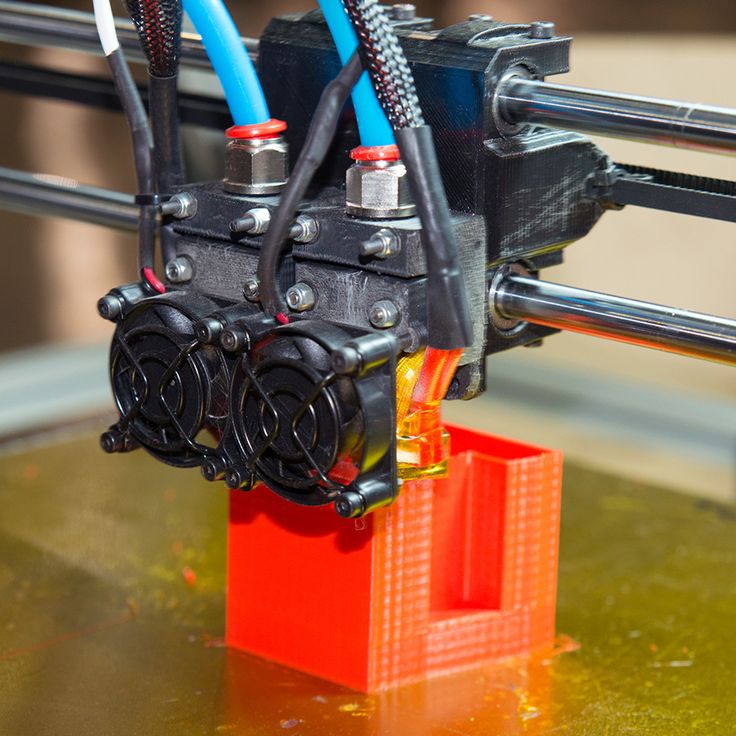 The fibers handle some of the applied stresses on the part, boosting the properties of typically lower-grade materials. The addition of carbon fiber also improves the thermal stability of mechanical properties, which widens the range of operating temperatures and improves predictability of material behavior in both high and low temperatures.
The fibers handle some of the applied stresses on the part, boosting the properties of typically lower-grade materials. The addition of carbon fiber also improves the thermal stability of mechanical properties, which widens the range of operating temperatures and improves predictability of material behavior in both high and low temperatures.
A close-up of chopped carbon fibers used in 3D printing, taken on an SEM.
These fibers are chopped up into fine pieces and mixed into the plastic before it gets extruded into a spool for use with material deposition-based 3D printers. In this case, the 3D printing process remains the same, because the fibers are just suspended in the thermoplastic - so it gets heated, extruded, and cooled into the part just like any other FFF style 3D printed. Chopped composite 3D printing materials take normal plastic that may be lacking in certain properties and boost it. In the case of carbon fiber, the fibers boost the strength, stiffness, and dimensional stability of the part to make it higher-performing than its base plastic.
Chopped carbon fiber 3D printing materials can be used like normal 3D printing plastics, boosting some material properties.
The quantity of fibers and the length of chopped segments impacts the strength and quality of the part. Different vendors blend different amounts of fiber into their plastic, yielding materials with different strengths. Below a certain threshold, and the fibers boost surface finish, print quality. Above that threshold, mixing in a large quantity of longer fibers, and you get a stronger material, but you sacrifice surface finish and part accuracy because there is a smaller percentage of plastic in the material overall. The thermoplastic is essential to the mixture because it makes the printing process work well, so your parts can only get so strong.
Continuous Fiber 3D Printing
Continuous fiber 3D printing adds continuous strands of fiber reinforcement to the part (think back to fiber strands), to achieve metal-strength properties at a fraction of the weight. Using two print nozzles, the printer builds the matrix material out of a thermoplastic, and irons down continuous strands of continuous fibers into the part. This process is called Continuous Fiber Fabrication (CFF).
Using two print nozzles, the printer builds the matrix material out of a thermoplastic, and irons down continuous strands of continuous fibers into the part. This process is called Continuous Fiber Fabrication (CFF).
Continuous Kevlar strands are ironed into this part to increase its impact resistance with a composite fiber printing nozzle. A thermoplastic matrix material forms the skin and core of the part.
The power of CFF comes from the continuity of the strands. Unlike chopped fibers, continuous strands can absorb and distribute loads across their entire length. When placed within a thermoplastic matrix, the part can handle higher loads and absorb larger impacts. This allows these parts to achieve the strength of metal at a fraction of the weight.
Continuous fibers form the backbone of a 3D printed part, because the loads distribute along their length, rather than into the plastic.
The CFF 3D printing process consists of two steps per layer - first, a thermoplastic is extruded to form the infill and shells of the part - this serves as the “matrix” material of the composite.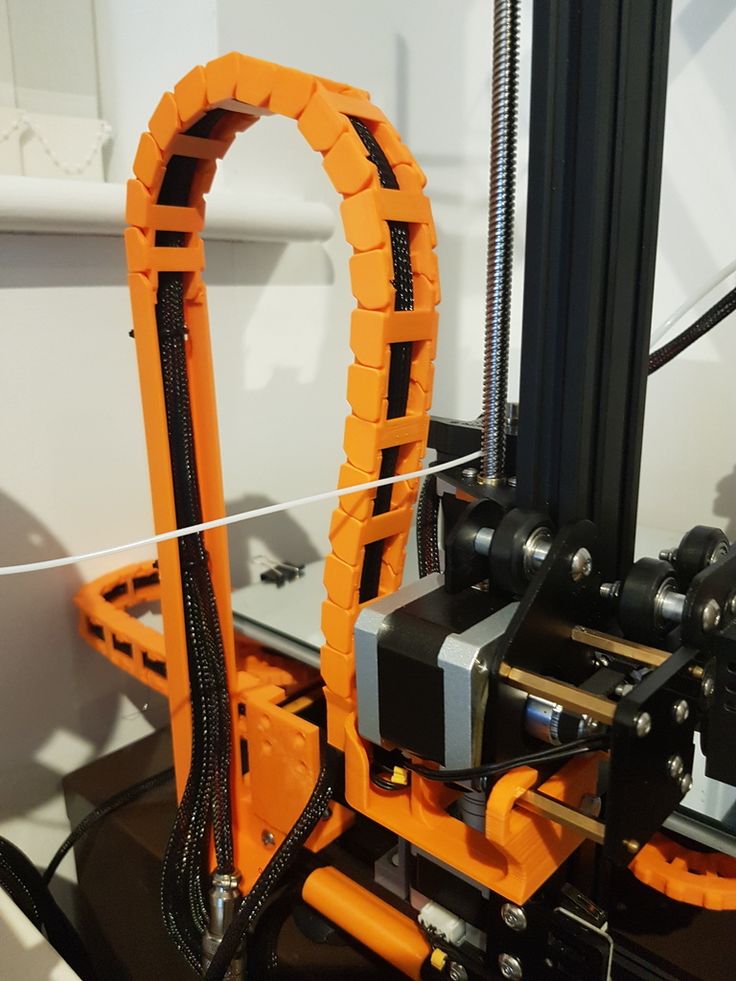 Next, the continuous fiber is ironed into that matrix, fusing with the thermoplastic by use of a compatible resin coating. This process repeats layer by layer, forming the fibers into the backbone of the 3D printed part, while the thermoplastic acts as a skin. This process is also similar to how rebar can be laid down inside concrete to reinforce it.
Next, the continuous fiber is ironed into that matrix, fusing with the thermoplastic by use of a compatible resin coating. This process repeats layer by layer, forming the fibers into the backbone of the 3D printed part, while the thermoplastic acts as a skin. This process is also similar to how rebar can be laid down inside concrete to reinforce it.
The fibers form the "backbone" of the part and can be laid down in specific patterns to optimize a part’s strength for its weight and material consumption. You can place fiber in specific areas based on how the part will experience load, putting the strength exactly where you need it. This is very different from standard deposition-based 3D printers, including with chopped fibers, because these methods have an even distribution of properties throughout the entire part. Different fiber reinforcement options can be used for different loading conditions and behaviors. You can learn more about the different reinforcement strategies in Fiber Reinforcement Strategies.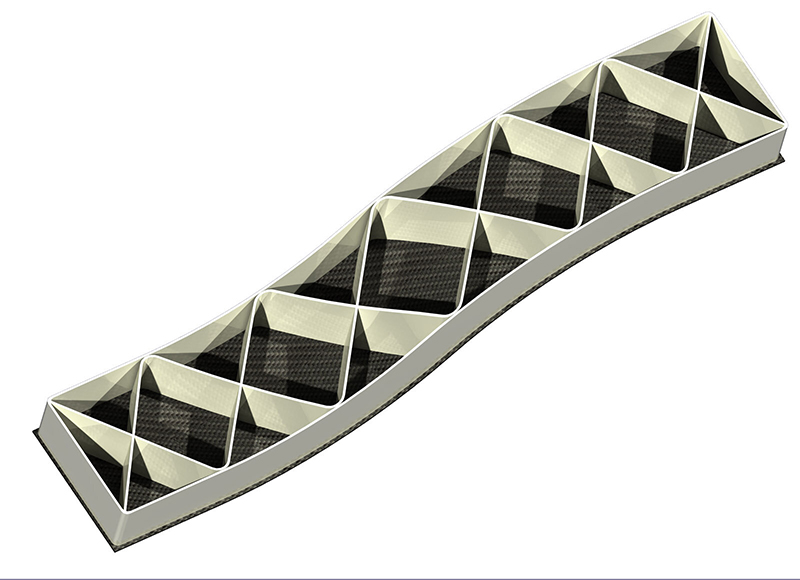
A variety of different fibers can be used for reinforcement as well, depending upon what material properties your part needs to have. Markforged 3D printers offer a few different fiber materials so that you can choose the strength behavior of the reinforcement:
Carbon Fiber is a stiff and strong fiber that behaves like 6061 Aluminum, so it can be used for lightweight components that support heavy loads.
This 3D printed carbon fiber can match the strength of aluminum when continuous. Both are supporting a 27.5 lb load.
Fiberglass is a sturdy, cost-effective reinforcing material with some compliance to it. It boosts part strength above that of plastics and is a good starting point for printing with reinforcement.
Fiberglass is a robust 3D printing fiber option, exceeding the strength of chopped fiber, ABS, and PLA when supporting a 7.5 lb weight.
Kevlar has high toughness and shock resistance, making it ideal for shock-loading and high-impact conditions. It bends instead of breaking.
It bends instead of breaking.
PLA, ABS, and Kevlar reinforced 3D printed parts getting shock-loaded with some big hammer hits!
High Strength High Temperature (HSHT) Fiberglass maintains its strength and stiffness at high temperatures because of its high heat-deflection temperature. Its heat resistance allows it to hold up in more extreme environments.
This test was performed after heating each beam to 300 degrees Fahrenheit in an oven. HSHT does not lose strength at high temperatures, so it still supports the 5 lb load.
So between selecting different fiber types for certain material needs, and controlling where the fiber can be placed layer by layer, you can control the behavior and performance of your parts. This is one of the primary advantages continuous 3D printed composites have over chopped fiber materials. Not only do you get stronger parts, but you also can produce parts optimized for their application.
Ultimate Materials Guide - 3D Printing with Carbon Fiber
Overview
Carbon fiber filaments use tiny fibers that are infused into a base material to improve the properties of that material.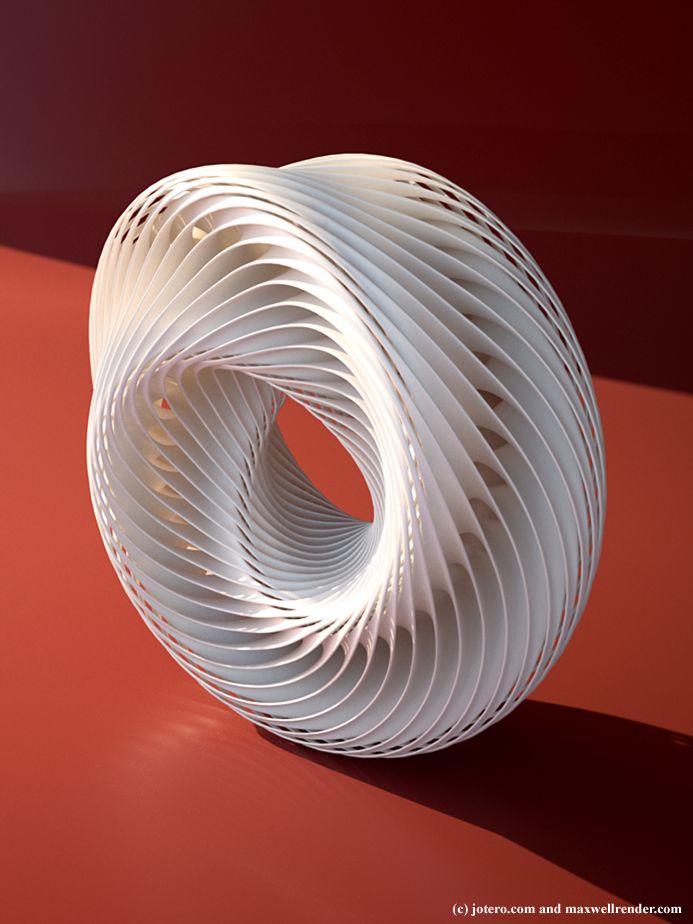 Several popular filaments can be bought with carbon fiber fill including PLA, PETG, Nylon, ABS, and Polycarbonate. These fibers are extremely strong and cause the filament to increase in strength and stiffness. This also means that the 3D printed parts will be much lighter and more dimensionally stable, as the fibers will help prevent shrinking of the part as it cools. Print settings, such as printing temperature, speed, bed adhesion, and extrusion rates will be very similar to the normal settings used for the base material that the fibers were added to (for example, the stock PLA settings would be a good starting point for PLA-based carbon fiber filament). However, due to the added fibers, these specialty materials are more likely to clog and can require special hardware to avoid damaging the printer.
Several popular filaments can be bought with carbon fiber fill including PLA, PETG, Nylon, ABS, and Polycarbonate. These fibers are extremely strong and cause the filament to increase in strength and stiffness. This also means that the 3D printed parts will be much lighter and more dimensionally stable, as the fibers will help prevent shrinking of the part as it cools. Print settings, such as printing temperature, speed, bed adhesion, and extrusion rates will be very similar to the normal settings used for the base material that the fibers were added to (for example, the stock PLA settings would be a good starting point for PLA-based carbon fiber filament). However, due to the added fibers, these specialty materials are more likely to clog and can require special hardware to avoid damaging the printer.
- Increased strength and stiffness
- Very good dimensional stability
- Lightweight
- Abrasive and requires hardened steel nozzle
- Increased oozing while printing
- Increased brittleness of filament
- Higher tendency to clog
Hardware Requirements
Carbon fiber filled filaments have the same requirements as the base filament it is infused with. The hardware requirements listed below are for carbon fiber filled PLA filament.
The hardware requirements listed below are for carbon fiber filled PLA filament.
Bed
Temperature: 45-60 °C
Heated Bed Optional
Enclosure not required
Build Surface
Painter’s tape
PEI
Glass plate
Glue stick
Extruder
Temperature: 200-230 °C
Requires Wear Resistant Hardened Steel Nozzle
Cooling
Part Cooling Fan Required
Best Practices
These tips will help you reduce the chances of common 3D printing issues associated with carbon fiber filled filaments such as clogging and the nozzle wearing down.
Upgrade to Hardened Steel Nozzle
The carbon fibers in these filaments can be extremely abrasive. In many cases, the carbon fibers are actually harder than the brass nozzles used on most 3D printers, so trying to print these materials with a stock nozzle could damage the printer. Instead, plan on upgrading to a hardened steel hotend. These hotends can resist the added wear from the fibers, however, they also tend to be less thermally conductive than their brass counterparts.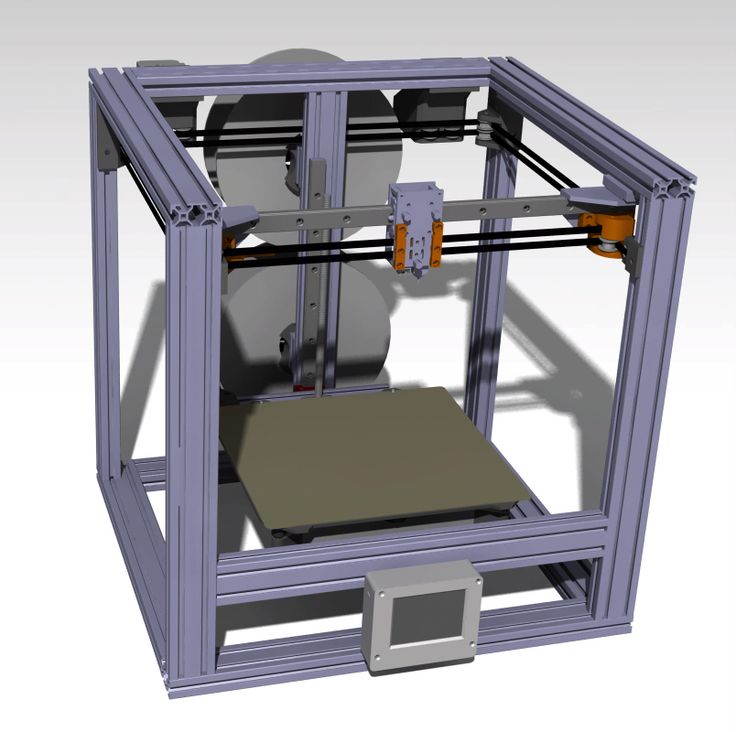 You may need to set the extruder temperature as much as 40° hotter than usual, which also helps with reducing the chance of a clog. Reducing the fan speed can also be useful to prevent thermal issues with the steel nozzles.
You may need to set the extruder temperature as much as 40° hotter than usual, which also helps with reducing the chance of a clog. Reducing the fan speed can also be useful to prevent thermal issues with the steel nozzles.
Adjust Retraction Settings to Avoid Clogs
Since the filament is full of small fibers that won’t melt, the chances of a nozzle clog are greatly increased over the base material. We recommend reducing your retraction distance or disabling retractions all together, as the retractions can increase the change of a buildup of fibers inside the extruder assembly. If you want to minimize the number of retractions that are performed, Simplify3D includes a very useful setting that will actually adjust the travel path of the extruder to stay within the interior of the part so that no retraction is needed. You can enable this setting by turning on the “avoid crossing outline for travel movements” option on the Advanced tab of your process settings.
Reduce the Print Speed for Consistent Results
Using a slower print speed can be a big benefit for carbon fiber filled materials, as the extruder will be under less stress, and has a higher chance of pushing small clogs through the nozzle if they start to form. Try reducing your print speed by 25-50% to see what value works best for your specific brand of plastic. If you still experience clogs after making these changes, we have an entire section on our Print Quality Guide dedicated to this issue that includes several other tips to help troubleshoot this issue: How to Fix a Clogged Extruder.
Try reducing your print speed by 25-50% to see what value works best for your specific brand of plastic. If you still experience clogs after making these changes, we have an entire section on our Print Quality Guide dedicated to this issue that includes several other tips to help troubleshoot this issue: How to Fix a Clogged Extruder.
Use a Guided Filament Path
Carbon fiber filled filaments tend to be far more brittle than the base filament and can snap easily if they are forced through tight corners, or rub on sharp edges of the printer frame. Make sure that the entire filament path, from the spool to the nozzle, consists only of gentle curves, with no sharp turns or areas where the filament will be dragged along a surface. Using a PTFE guiding tube, or ensuring that the filament spool is in a strategic place with regards to the extruder can help reduce the chance of filament breakage.
Pro-Tips
- Nozzles with larger diameters (0.5mm or more) are far less likely to clog, as the fibers will fit through the larger nozzle hole much more easily.
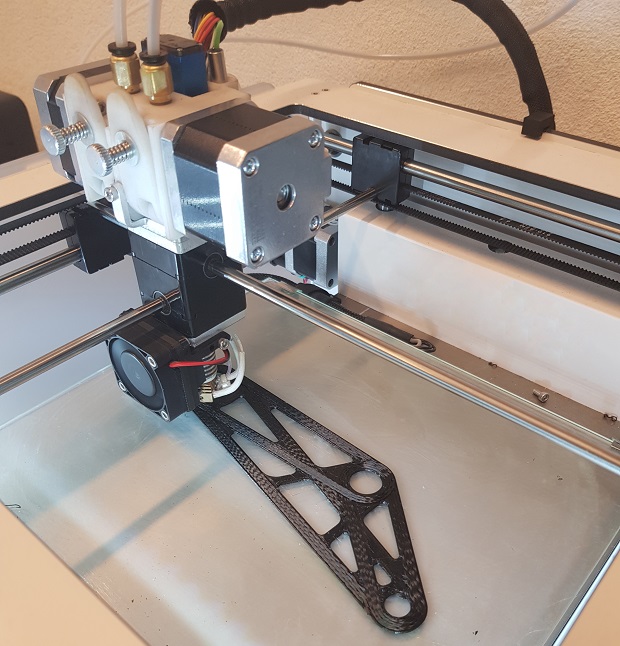
- If the nozzle seems to clog right away after printing the first layer or two, try increasing the first layer height. If the nozzle is too close to the bed, this will create increased back-pressure while printing these layers that can cause the fibers to build up and clog the nozzle temporarily.
Get Started with Carbon Fiber Filled
There are many unique applications for this speciality material. We’ve compiled a few tips below to help you get started.
Common Applications
- R/C Vehicles
- Functional prototypes
- Decorative pieces
- Lightweight Props
Sample Projects
- F16
- Formula 1 Car
- Quadcopter
- Darth Revan’s Mask
Popular Brands
- Proto-Pasta Carbon Fiber Reinforced PLA
- Matterhackers NylonX
- 3DXTECH
PLA-CCF (Carbon Fiber) with carbon fiber for 3D printer
Available options:
Ø1.75mm 10m
Ø1. 75mm weight: 0.125 kg
75mm weight: 0.125 kg
Ø :
- Description
- Features
- Print Modes
- Features
Advantages:
- safety;
- dimensional stability;
- lightness of products;
- ease of printing - no delamination between bullets, good adhesion to the platform.
Print modes:
| Options | Meaning |
|---|---|
| Extruder temperature | 200-220°C |
| Platform temperature | 50-70°C |
| Airflow model | need |
| Print speed | 30-60 mm/s |
| Printer type | open |
Specifications:
| Specifications | Meaning |
|---|---|
| Thread diameter, mm | 1. 75 +/-0.05 75 +/-0.05 |
| Ovality, mm | +/-0.02 |
| Linear weight, m/kg (length 1kg 1.75mm) | |
| Flexural strength, times | - |
| Print technology | FDM |
Mechanical data:
| Specifications | Meaning |
|---|---|
| Density, g/cm 3 | 1.15 |
| Operating temperature, °С | - |
| Tensile strength, MPa | 48 |
| Elongation at break, % | 11 |
| Tensile modulus, MPa | - |
| Flexural modulus, MPa | - |
| Bending strength, MPa | - |
| Charpy impact strength (23°C), kJ/m 2 | - |
| Water absorption, % 24h/23ºC, % | - |
PLA-CCF (Carbon Fiber) is a material with the introduction of 10% carbon fibers into PLA plastic to improve the mechanical properties of products.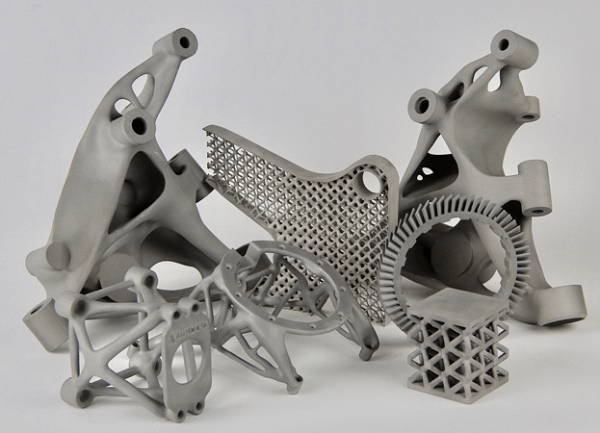 Products made from this material are more rigid, providing excellent structural strength and interlayer adhesion with very low strain shrinkage. PLA-CCF is stiff and light compared to regular PLA, but it is more brittle.
Products made from this material are more rigid, providing excellent structural strength and interlayer adhesion with very low strain shrinkage. PLA-CCF is stiff and light compared to regular PLA, but it is more brittle.
- This material is not stronger, but more rigid, which means that the structural support of the structure is increased, making it less flexible. Such properties of the material make it ideal for creating products such as drone or RC car bodies, frames, housings, tools and other products that do not need to flex.
PLA CCF (Carbon Fiber) is optimized for 3D printing, carbon fibers that are short enough not to clog the printer's extruder nozzle, but at the same time long enough to ensure the rigidity of the products. This material is quite abrasive, so prolonged use can lead to wear of the extruder nozzle.
Tags: PLA, PLA, carbon, carbon, fibre, carbon fiber, CF
3D printing application for vintage car restoration and repair
Jay Leno is an American Emmy Award-winning comedian, television host, and owner of one of the finest, if not the finest, car collections in the world.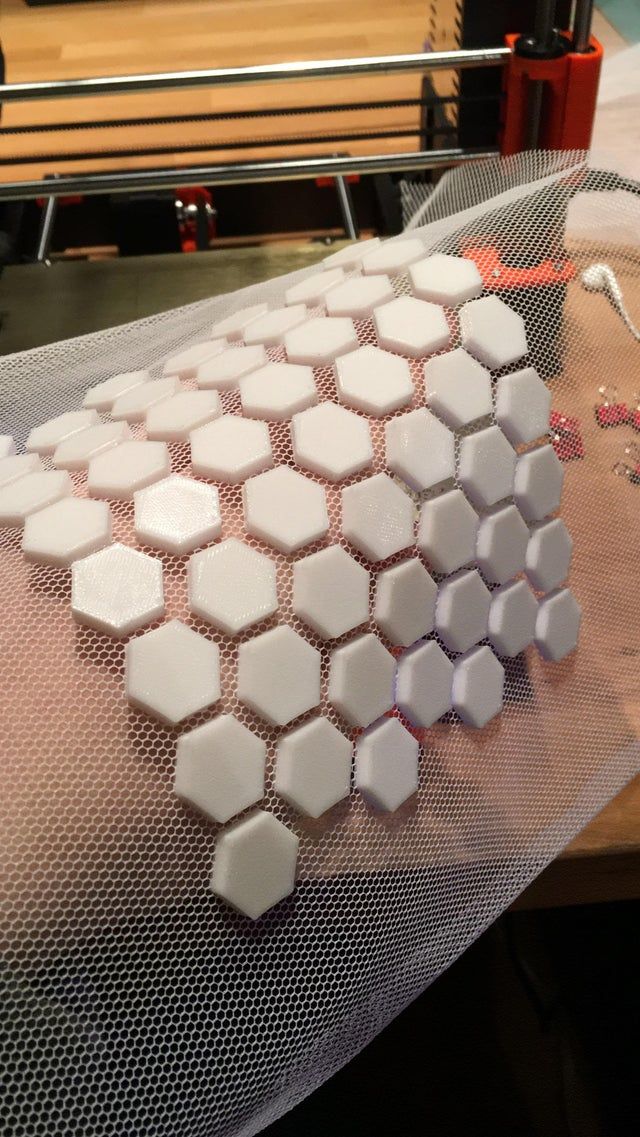 Based in Burbank, California, the Big Dog Garage collection includes over 200 cars and 100 motorcycles. The area of the premises allotted for finished cars is 1600 square meters. But that's not all, because in the garage there are several buildings reserved for maintenance, repair and restoration, where several mechanics are constantly working.
Based in Burbank, California, the Big Dog Garage collection includes over 200 cars and 100 motorcycles. The area of the premises allotted for finished cars is 1600 square meters. But that's not all, because in the garage there are several buildings reserved for maintenance, repair and restoration, where several mechanics are constantly working.
Jay Leno is considered one of the most respected auto journalists in the United States. Not only does he have one of the largest car collections in America, but he also restores and restores rare models. It is important that all cars and motorcycles in the garage are full-fledged, efficient specimens, ready to hit the road at any time.
Even with all the attention the team puts into keeping the cars running, some parts will inevitably break. Finding replacement parts for classic and hand-built cars, some over 100 years old, is next to impossible, and making new ones using traditional methods can become very costly and time consuming.
Jay Leno and his team do not solely rely on traditional methods, but instead use advanced technology to solve this problem. By incorporating 3D scanning, reverse engineering and 3D printing into their workflow, they create both end-use parts and tooling for automotive injection molding. Not only does the technology provide huge benefits for vintage vehicles, but it is also invaluable for unique and custom vehicles that do not have mass-produced parts.
For over 10 years Jay Leno's team has worked closely with major 3D printer manufacturers Stratsys and 3D Systems. Big Dog Garage engineers use the company's Stratsys DimensionSST 1200 and Fortus250 3D printers. They also use Stratsys Direct Manufacturing and 3D Systems On Demand 3D printing services. In his show "Jay Leno's Garage", Jay shared his experience of using 3D printing technologies to restore cars.
November 2019 Big Dog Garage Joins Stratasys Performance Partner Program
As part of the partnership, Stratasys will provide Jay Leno's auto repair companies with access to its 3D printers to produce custom parts.